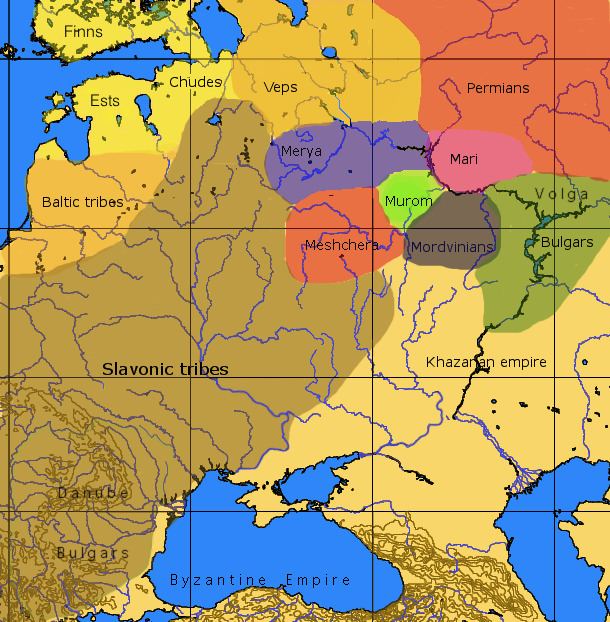 | ||
Territorial changes of Russia in the course of over five centuries happened by means of military conquest and by ideological and political unions.
Contents
Russian Tsardom and Empire
Many non-Slavic peoples founded their own states before Kievan Rus, for example, Sarir state of the Caucasian Avars (5th – 12th centuries), Tsahur Khanate (7th – 16th centuries), Zirikhgeran state of the Dargin and Kubachi peoples (6th – 15th centuries), Gazikumukh Shamkhalate of the Lak people (734–1642), Kaitag state of the Dargin people (6th century – 1813) etc.
Ivan III (reigned 1462-1505) and IV (reigned 1547-1584) expanded Muscovy's (1283–1547) borders considerably by annexing the Novgorod Republic (1478). After a period of political instability the Romanovs came to power (1613) and the expansion-colonization process of the Tsardom continued.
While western Europe colonized the new world, the Tsardom of Russia expanded overland - principally to the east, north and south.
This continued for centuries; by the end of the 19th century, the Russian Empire reached from the Black Sea to the Pacific Ocean, and for some time included colonies in the Americas (1732-1867) and a short-lived unofficial colony in Africa (1889) in present-day Djibouti.
Soviet Union
After the October Revolution, Poland and Finland became independent from Russia and stayed so until modern times. Russia proper has become "Soviet Russia" and eventually Russian Federation. Its territory varied greatly during the Russian Civil War. Eventually most of the former lands of the Russian Empire were consolidated into the Soviet Union.
After World War II the Soviet Union annexed Karelia from Finland, East Prussia (now Kaliningrad Oblast) from Germany, the Kuril Islands and southern Sakhalin from Japan, Tuva (previously governed by Mongolia and Manchu Empire), West Belarus and West Ukraine from Second Polish Republic
Territories of the former Russian Empire that permanently or temporarily became independent:
Modern Russia
The dissolution of the Soviet Union have led to the creation of independent post-Soviet states, with Russian SFSR becoming Russian Federation. Territorial disputes of the Russian Federation involve both post-Soviet states and other neighbors.
Following the annexation of Crimea, the Ukrainian peninsula became part of the Russian Federation.
Separatist states:
